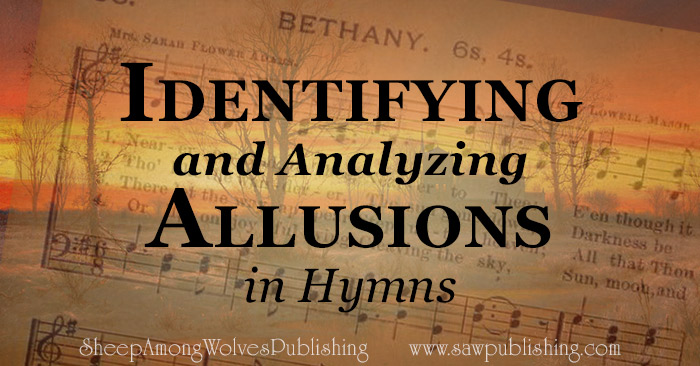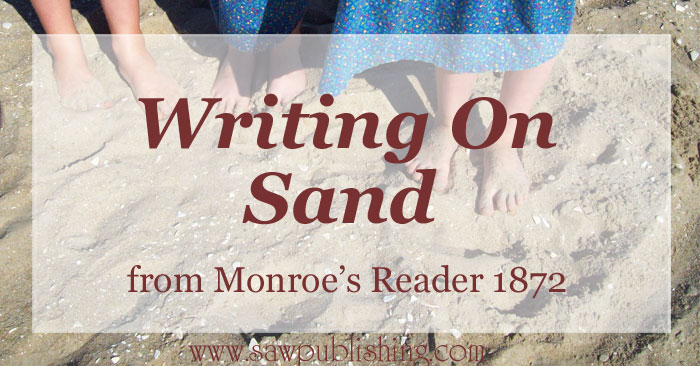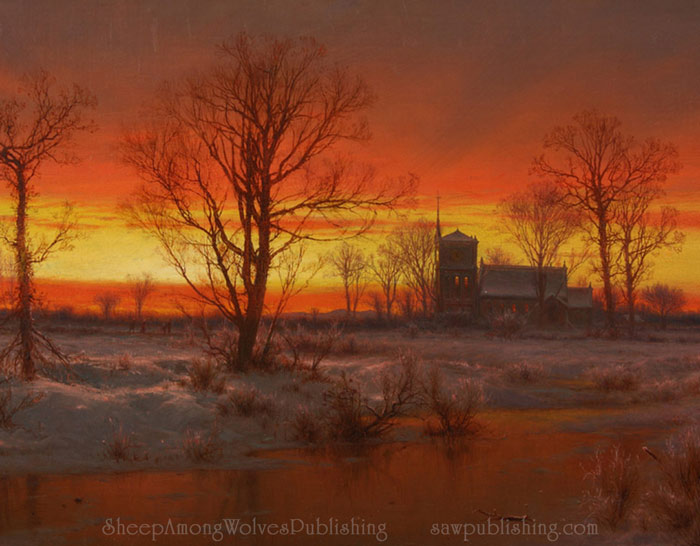Identifying and Analyzing Hymn Allusions

Did you ever read a hymn, whether familiar or unfamiliar, and wonder where in the world the author got such a strange idea? Did you ever stop short in surprise, perhaps horror, to find an idea unusual enough that you thought it couldn’t have come from anywhere but the poet’s own imagination, and if it did, wasn’t it a little bit dangerous?
I have. And what’s worse, I did it with Charles Wesley’s “Hark! The Herald Angels Sing.” I was about eleven or twelve, and in fairness to myself I had picked up perhaps an exaggerated concern for choosing sound, Scriptural hymns. And when I came across the phrase “ris’n with healing in His wings,” I was quite horrified. Jesus didn’t have wings! What kind of strange poetic licence would cause the author to say that He had wings? I was rather concerned about singing this hymn for a while, because it seemed like such an odd idea that the poet must have invented it. I don’t remember precisely how long afterward it was that I read the book of Malachi, and was perhaps equally astonished, though much more pleased to find the words, “But unto you that fear my name shall the Sun of righteousness arise with healing in his wings.” I was delighted, though a little bit ashamed, to find Charles Wesley thus vindicated, and one of the greatest Christmas hymns once again “safe.” The contemplation of this, and many other subtler examples, has led me to realize that some of the strangest ideas and phrases in hymns are the result of a thorough knowledge of Scripture—not a love of poetic licence!
And since there are these kinds of allusions in our popular hymns, it might be a fruitful and helpful exercise to identify and analyze them, and discover a wealth of solid Biblical truth woven into many of our greatest pieces of religious poetry.
Identifying Hymn Allusions
A good place to begin looking for allusions in hymns, is in phrases borrowed directly from the Bible. Many hymn-writers employ this technique, making it comparatively simple to identify the allusions they wish to draw. Because the large majority of hymns were written prior to the widespread acceptance of modern versions of the Bible, these borrowed phrases are almost exclusively taken from the King James Version, and a familiarity with this version makes it easier to pick out less obvious allusions. Sometimes, however, instead of using the referenced phrase itself, an author will choose an oftentimes vague alternative phrase or name for a more familiar concept or person. An example of this is in the well-know hymn “Nearer My God, To Thee” where the author chooses to speak of the patriarch Jacob as “the Wanderer.” The reference only becomes evident as we continue to follow out the allusion to the rock-pillow, the ladder to heaven with angels ascending and descending, and finally the direct mention of “Bethel.” This type of subtle allusion was extremely popular among hymn-writers of a certain period, so we find a great deal of these hard-to-spot references within the hymns of these authors.
On the whole, I think we could divide hymns containing allusions into four broad categories: faithful meterizations, loose paraphrases, single passage allusions, and multiple-concept allusions, all of which we will define below.
Faithful Meterizations
The first category belongs to hymns which are direct meterized paraphrases of Bible passages. These are hymns where the author took a specific series of verses, often a Psalm, and made a phrase-by-phrase transfer of the words and content into poetry. Some of the earliest hymns ever written in English belong to this class. With these hymns, you can sit down with the hymn in one hand and the passage in the other, and follow along almost completely. You should have no difficulty pointing out in each verse of the hymn its direct counterpart in the text. Occasionally, some of these verses will be reordered from their original sequence, especially if the author chose to make use of a refrain, but even if this is the case, it is very straightforward to point to each Bible phrase in the verses of the hymn. This is what is meant by “faithful meterizations.” Hymns such as “The Lord’s My Shepherd” and “Unto the Hills Around” fall into this category.
Loose Paraphrases
A second class of hymns containing allusions, is comprised of hymns which are still paraphrases of Bible passages, but are looser paraphrases, which allow for the author’s own words and ideas, or else incorporate verses and concepts from other parts of Scripture. Sometimes these are fairly easy to identify with the paraphrased passage, but other times, as in the case of “Joy, To the World,” we find it a little bit difficult at first to trace the connection. And in defence of Isaac Watts, his version of meterized psalms was never intended to be a direct paraphrase, but a series of hymns based on the Psalms with New Testament concepts incorporated. In this class of hymns the main idea is still a paraphrase of a specific passage of Scripture. In this category, I have placed “Joy to the World,” “Through All the Changing Scenes of Life” and “Lord in the Morning,” to name a few.
Single Passage or Concept Allusions
There are many hymns as well, which are by no means intended as paraphrases, but nevertheless have a direct, decided reference to a story, parable or command contained in the Bible. These hymns usually parallel the verses from Scripture with a problem, lesson or benefit we experience today. They key in on a specific idea or passage, and draw from it the conclusion of the hymn, often in a combination of the author’s own words and the Scriptural phraseology being referenced. There is a large quantity of hymns in this class, many of them written in the mid–nineteenth century. Popular hymns such as the aforementioned “Nearer, My God, To Thee” and John Newton’s “Glorious Things of Thee Are Spoken” belong to this category.
Multiple Verse or Concept Allusions
The fourth and final classification I would like to look at, is hymns that contain not one major reference to a specific verse or event, but many smaller, subtler allusions which the author draws in from various parts of the Bible to create a hymn that is rich with references and Biblical ideas. Often this kind of allusion passes unnoticed on the surface, but it is nearly always rewarding to excavate old classics or new favourites and find these gems buried thickly within. Realizing and identifying this type of allusion can really give a greater understanding and appreciation of the thought and wisdom put into many of our finest English hymns. A couple of notable hymns in this class are “Love Divine, All Loves Excelling” and “Christ, Whose Glory Fills the Skies.”
Understanding Allusions Can Be Rewarding!
Hymn-writing is an amazing tool for good. Biblical ideas expressed in superb language and flowing verse have an incredible ability to impact hearts, and stick fast in people’s memories.
In this series of posts I would like to highlight some outstanding examples of hymnody from each of the four categories mentioned above. By no means will this be an exhaustive list of great hymns that illustrate these points—I’m sure there are many, many others that I am not even aware of. But it is intended to begin a train of thought which I hope will continue for the rest of your life and cause you to examine the allusions and ideas in hymns, and to ponder upon their meanings, as you discover the wonderful Bible knowledge which many of the greatest hymn-writers displayed. And in so doing, I hope that you will contemplate more and more the ageless truth and power which these authors have drawn directly from the pages of Scripture.
This post may have been shared with the linkups listed here.
You might also like:

“Writing On Sand” is an outstanding example of school reader poetry that will kindle in your child a desire and appreciation for great poetry.

